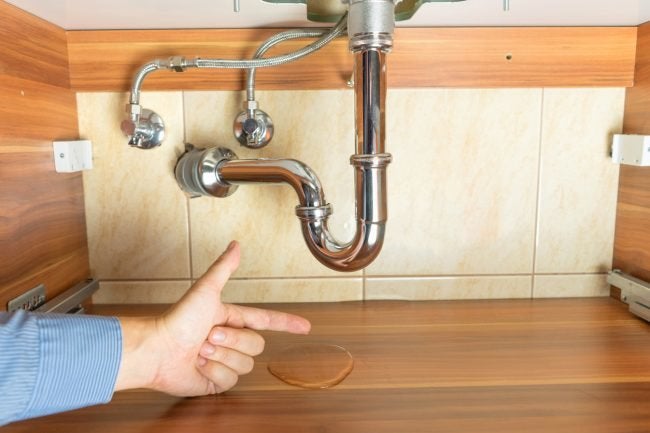Expose Concealed Water Line Leaks: Six Proven Detection Techniques
Expose Concealed Water Line Leaks: Six Proven Detection Techniques
Blog Article
They are making several great observations related to Locating water leaks overall in this article following next.

Early detection of dripping water lines can mitigate a potential catastrophe. Some little water leakages may not be visible.
1. Check Out the Water Meter
Every residence has a water meter. Examining it is a guaranteed way that helps you uncover leakages. For starters, shut off all the water sources. Make sure no one will certainly purge, use the tap, shower, run the cleaning maker or dish washer. From there, go to the meter and also watch if it will certainly alter. Given that nobody is utilizing it, there ought to be no activities. That shows a fast-moving leak if it relocates. Furthermore, if you detect no changes, wait an hour or 2 and also examine back once more. This implies you may have a sluggish leak that might also be below ground.
2. Check Water Consumption
Assess your water expenses and track your water consumption. As the one paying it, you need to discover if there are any kind of discrepancies. If you identify sudden changes, despite your intake coinciding, it means that you have leakages in your plumbing system. Remember, your water bill must drop under the same variety every month. An unexpected spike in your costs indicates a fast-moving leak.
A constant rise every month, also with the same habits, shows you have a slow leakage that's also gradually intensifying. Call a plumber to completely check your residential property, especially if you really feel a cozy area on your floor with piping underneath.
3. Do a Food Coloring Test
30% comes from toilets when it comes to water intake. Test to see if they are running properly. Decrease flecks of food color in the container and wait 10 minutes. There's a leakage in between the tank and dish if the shade in some way infiltrates your bowl throughout that time without flushing.
4. Asses Exterior Lines
Don't neglect to inspect your outdoor water lines too. Must water seep out of the connection, you have a loose rubber gasket. One little leak can squander tons of water as well as increase your water expense.
5. Analyze the scenario and also evaluate
Homeowners ought to make it a practice to check under the sink counters and also even inside cabinets for any kind of bad odor or mold and mildew growth. These two red flags indicate a leakage so prompt attention is called for. Doing routine assessments, even bi-annually, can save you from a major trouble.
More importantly, if you recognize your home is currently old, maintain a watchful eye on your heating units, hoses, pipes and so on. Look for stainings as well as weakening as the majority of devices and also pipelines have a life span. They will also normally weaken as a result of wear and tear. Don't wait for it to rise if you think leaking water lines in your plumbing system. Call a professional plumber immediately so you don't end up with a terrible mess in your house.
Early detection of dripping water lines can alleviate a possible calamity. Some tiny water leakages may not be noticeable. Examining it is a proven means that helps you uncover leaks. One little leak can lose heaps of water and also increase your water costs.
If you suspect leaking water lines in your plumbing system, don't wait for it to intensify.
WARNING SIGNS OF WATER LEAKAGE BEHIND THE WALL
PERSISTENT MUSTY ODORS
As water slowly drips from a leaky pipe inside the wall, flooring and sheetrock stay damp and develop an odor similar to wet cardboard. It generates a musty smell that can help you find hidden leaks.
MOLD IN UNUSUAL AREAS
Mold usually grows in wet areas like kitchens, baths and laundry rooms. If you spot the stuff on walls or baseboards in other rooms of the house, it’s a good indicator of undetected water leaks.
STAINS THAT GROW
When mold thrives around a leaky pipe, it sometimes takes hold on the inside surface of the affected wall. A growing stain on otherwise clean sheetrock is often your sign of a hidden plumbing problem.
PEELING OR BUBBLING WALLPAPER / PAINT
This clue is easy to miss in rooms that don’t get much use. When you see wallpaper separating along seams or paint bubbling or flaking off the wall, blame sheetrock that stays wet because of an undetected leak.
BUCKLED CEILINGS AND STAINED FLOORS
If ceilings or floors in bathrooms, kitchens or laundry areas develop structural problems, don’t rule out constant damp inside the walls. Wet sheetrock can affect adjacent framing, flooring and ceilings.
https://www.servicemasterbyzaba.com/blog/how-to-detect-water-leakage-in-walls/

As a fervent reader about Leaking water lines, I imagined sharing that chunk was a smart idea. Appreciated our write-up? Please share it. Help somebody else discover it. Thank you for taking the time to read it.
Schedule Services Report this page